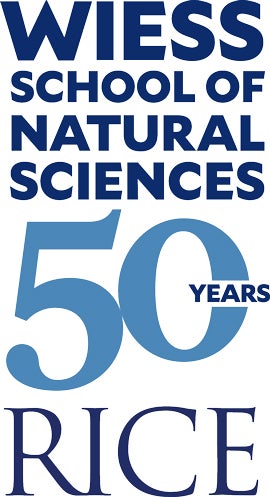
Fluorine’s reactivity and tendency to form strong bonds have long proven useful in materials chemistry and nanotechnology, so much so that fluorine today is an essential part of materials as mundane as toothpaste and as exotic as magnetic 2D boron nitride.
The lab of Rice chemist Angel Martí is in the midst of a long-term project aimed at demonstrating fluorine’s utility as a gateway for tailoring the surface properties of boron nitride nanotubes, a material that’s attracted increasing worldwide research interest in recent years.
“In our daily lives, fluorine is ubiquitous,” said Martí, professor and department chair of chemistry. “It’s used in Teflon cookware, paints, food packaging, firefighting foams, in the production of steel and many other things. In the labs, we use it for a variety of reasons, but in principle, for the same kind of properties that make it indispensable in everyday products: It is very reactive, and when it forms bonds with other molecules, they are very stable bonds.”
For example, in work a few years ago, Martí collaborated with Rice materials scientist Pulickel Ajayan to study how fluorination affected atom-thick sheets of boron nitride.
“Substituting at certain positions in the hexagonal boron nitride framework can make the material magnetic,” he said. “That’s really interesting because we are now talking about a magnetic material that does not contain any metals.”

This work was extended to quantum dots of boron nitride — tiny flakes less than 50 nanometers wide — and showed fluorine substitution altered the energy levels of the material. “What it really allows is to tune the band structure,” he said.
2D boron nitride sheets and cylinders have the same structure and electronic configurations as 2D carbon graphene and nanotubes. But where carbon nanomaterials are either excellent conductors or short bandgap semiconductors, boron nitride is a non-conducting insulator. Martí said the similarities and contrasts between the materials are both scientifically intriguing and potentially useful.

“Because the connectivity of boron nitro nanotubes and carbon nanotubes are very similar, the tensile strength of the materials are very similar,” he said. “They are some of the strongest materials that we have access to. So if you need a very strong material that is electrically insulating, you might want to go with boron nitride nanotubes, and if you want one that is electrically conductive, you might want carbon nanotubes.”
As Rice researchers showed a quarter century ago, fluorination provided a path to tailoring the chemical properties of carbon nanotubes. Martí’s ongoing work aims to show the same is true for boron nitride nanotubes.
His group has spent the past year pioneering methods to attach fluorine atoms to borons on the outer walls of nanotubes, and it is preparing to publish a large set of functionalizations, subsequent reactions that replace those fluorines with other, useful sidechain molecules.
“Imagine, for example, that you can graft alkyl chains on the surface,” Martí said. “That is very different than adding aromatic groups or amines or alcohols to the surface. We are talking about different dipoles, different compatibilities that can conceivably make boron nitride nanotubes compatible with whatever material we want. It will give us the capability of dialing in the exact properties we want on the surface.”

